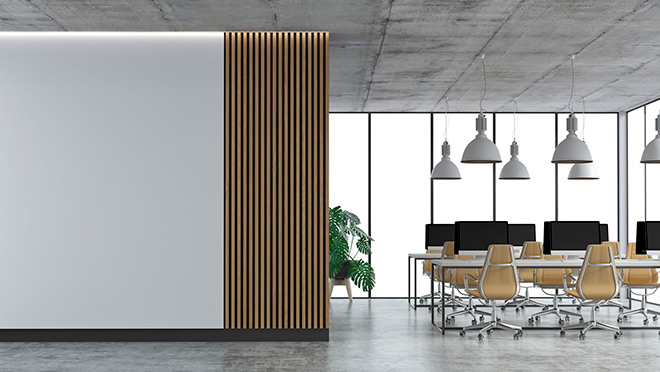New networked lighting incentives aid affordability

Beefed-up offer announced for advanced lighting controls projects
The DesignLights Consortium (DLC) calls networked lighting the "gateway to carbon-neutral, energy-optimized cities". But the DLC – the go-to for standards guidance on efficient lighting – also cautions that the technology needs to operate seamlessly to deliver on real energy savings.
We agree. As we launch a new tier of incentives for networked lighting controls (NLC) for key account customers we're urging Alliance members to stay up to speed on best practices and the specifics of available products. And we want to be involved right at the start of a project.
"Pre-engagement with us is required," says Jason Zhang, a senior BC Hydro engineer and lighting specialist. "That can help the customer and Alliance members understand our requirements in detail. And we'll better understand what the project looks like. That way, the customer will be in a better position to get the lighting control system they want, and which works effectively."
Asked about specific advice for Alliance members, Zhang emphasized these three points:
- Understand the systems you need to promote, including product specifics, through consultation with the manufacturer when possible.
- Know the additional steps you need to take in the commissioning process for these systems.
- Determine the customer's needs, and adjust system settings accordingly.
"The commissioning process is one of the key elements of being successful with these systems," says Zhang. "For customers who want to have systems that operate as they should, commissioning is a must. They have to make sure that all equipment is operating efficiently."
What the new incentives are all about
Our regular Custom Lighting offer's incentives aren't changing. But the new NLC offer tier can provide an up to four times multiplier on incentive amounts when the products are for NLC systems listed in the DesignLights Consortium (DLC) Quality Product Listing.
There are two qualifying options:
- NLC without energy monitoring including:
- Room-based/standalone NLC systems (non-networked) with basic automated lighting controls, or networked lighting controls without energy monitoring.
- Luminaire Level Lighting Controls (LLLC)
- NLC complete with energy monitoring and reporting including:
- NLC with energy monitoring, demand response functionalities and capability to integrate with other systems
Zhang says that while it's advisable to include energy monitoring components in networked lighting projects, BC Hydro recognizes that the price of those monitoring components may prevent some customers from adopting network lighting projects. That's why NLC systems without energy monitoring are still included in the new offer.
A U.S.-based 2017 study on the energy savings of networked lighting control systems found that average savings from all NLC systems were 49%, although savings amounts were highly site specific. The greatest savings came in warehouse, office, restaurant, and health care facilities.
Eligibility requirements: energy study vs. NLC incentives
For Key Account customers, the energy study offer funding covers up to 50% of the study costs up to $30,000 for commercial projects. A key account manager is required for these projects, but an energy manager is not mandatory.
Direct to incentive projects qualify when they have an estimated 25,000 kWh per year in savings, and at least 2,500 kWh/year per site for bundled projects. The up to four times multiplier only applies to energy conservation measures and qualified manufacturers defined by the DesignLights Consortium Qualified Products List.
Note that the BC Hydro lighting calculator has been updated to accommodate network lighting controls. Be sure to download the latest version available, with Version 11 coming soon.
What networked lighting systems offer
NLCs combine sensors, LEDs, connectivity, and data for a flexible lighting system that can improve occupant comfort and space utilization as well as delivering on energy savings. They allow for multiple control strategies, programmability, building or enterprise level control, and customized zone control.
Popular capabilities of NLCs include:
- Occupancy sensing – Automatic adjustment of lighting equipment based on the detection of the presence or absence of people in a space or exterior environment.
- Daylight harvesting – Automatically adjustment of lighting or other equipment based on the amount of daylight and/or ambient light present in a space, area, or exterior environment.
- High-end trim – Also known as "task tuning", it's the capability of adjusting maximum light output to less than the available maximum for an individual luminaire or group of luminaires at the time of installation or commissioning.
- Continuous dimming – A lighting control strategy that varies light output over a continuous range (from full light output to a minimum light output) without flickering, in imperceptible steps.
- Zoning – Automatic control of a collection of light fixtures so that they're always controlled the same way.
- Scheduling – Automatically adjusting lighting equipment based on time of day, week, month, or year.
How to kick off an NLC project
Do you have a potential project? Is one of your customers interested in considering an NLC project?
Here's how to get it done:
- Contact the Alliance to confirm customer eligibility.
- Consult with the controls manufacturer or agency to source a suitable and DLC qualifying controls system.
- Have the customer engage with their key account manager to initiate a pre-engagement meeting to determine next steps and start the application process.
Questions? Contact the Alliance team.